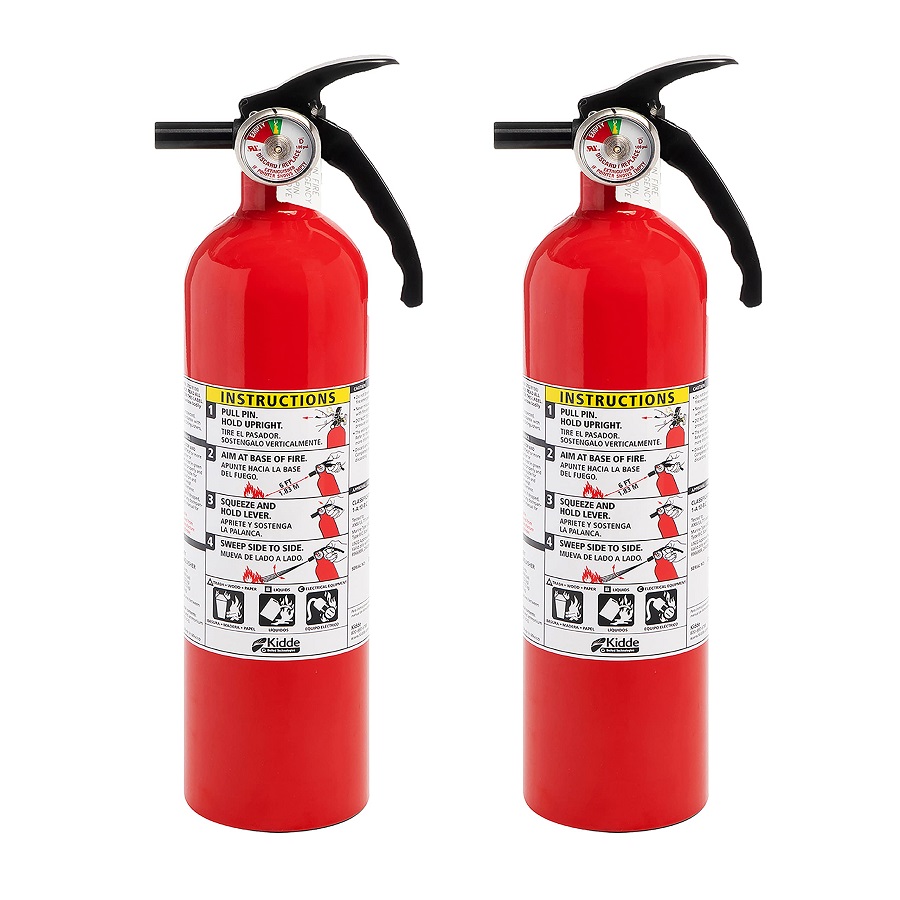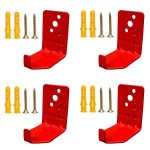When it comes to home safety, having the right fire extinguisher can be a crucial factor in preventing small fires from escalating into disasters. Understanding the different types of fire extinguishers, their classifications, and how to choose the right one for your home is vital for effective fire safety. This guide aims to equip homeowners with the knowledge needed to make informed decisions regarding fire extinguishers.
Understanding Fire Extinguisher Classes
Class A: Ordinary Combustibles
Class A fire extinguishers are designed to combat fires involving ordinary combustible materials such as wood, paper, and cloth. These are the most common types of fires that can occur in residential settings, making Class A extinguishers essential for home safety. They are typically filled with water or foam that cools the burning material and extinguishes the fire by removing heat. When choosing a Class A extinguisher, look for one with a rating of at least 2A, which indicates its effectiveness in extinguishing fires of this class.
Class B: Flammable Liquids and Gases
Class B fire extinguishers are specifically formulated to handle fires caused by flammable liquids and gases, including gasoline, oil, grease, and solvents. These fires can be particularly dangerous, as they can spread rapidly and are often more difficult to control. Class B extinguishers use either dry chemical agents or foam to smother the fire and eliminate the oxygen that fuels it. When selecting a Class B extinguisher, consider one with a rating of at least 2B to ensure adequate protection for your home.
Class C: Electrical Fires
Electrical fires are common in homes, particularly in areas with numerous electrical devices or appliances. Class C fire extinguishers are designed to extinguish fires involving energized electrical equipment, such as wiring, circuit breakers, and electrical appliances. These extinguishers typically use non-conductive agents, such as carbon dioxide or dry chemicals, to put out the fire without conducting electricity. When selecting a Class C extinguisher, ensure it has a specific rating and is suitable for the potential hazards in your home.

Assessing Your Home’s Fire Risk
Identifying High-Risk Areas
Before purchasing a fire extinguisher, it’s crucial to assess your home for potential fire hazards. Identifying high-risk areas, such as kitchens, garages, and storage spaces, can help you determine where extinguishers are most needed. The kitchen is often the primary source of fires due to cooking activities, so having a Class B extinguisher nearby is essential. Additionally, garages may contain flammable materials, making a Class B or Class C extinguisher a wise choice.
Evaluating Your Lifestyle
Your lifestyle and daily activities also play a significant role in determining the types of fire extinguishers you need. For example, if you frequently use power tools or engage in activities that produce sparks, such as welding or woodworking, you may need additional extinguishers. Homeowners with children should also consider the potential for accidental fires and ensure extinguishers are placed out of reach but easily accessible in an emergency.
Fire Extinguisher Ratings Explained
Understanding Ratings
Fire extinguishers are rated based on their effectiveness in combating different classes of fires. The ratings are often displayed on the extinguisher itself and consist of numbers and letters. For example, a rating of 2A means the extinguisher can extinguish a fire equivalent to 2.5 gallons of water for Class A fires. Ratings for Class B and C extinguishers indicate their effectiveness against flammable liquids and electrical fires, respectively. Understanding these ratings can help you choose the right extinguisher for your home’s specific needs.
Selecting the Right Size
The size of the fire extinguisher also matters. Smaller extinguishers are easier to handle and store, making them ideal for home use. However, they may not provide enough extinguishing agent for larger fires. A common recommendation is to have a minimum of a 2A:10B:C rated extinguisher for general home use, particularly in kitchens and garages. Assess the space where the extinguisher will be used and select a size that balances portability and capacity.
Proper Placement of Fire Extinguishers
Ideal Locations
Once you have selected the appropriate fire extinguishers for your home, it’s essential to place them in ideal locations. Fire extinguishers should be easily accessible and visible in case of an emergency. Common placements include near kitchen entrances, in hallways leading to bedrooms, and near the garage or workshop. Avoid placing extinguishers in areas that may be obstructed by furniture or other objects.
Accessibility and Maintenance
In addition to proper placement, ensure that extinguishers are maintained and regularly inspected. Fire extinguishers should be checked at least once a year for pressure levels and overall condition. Consider implementing a routine maintenance schedule and keep a record of inspections. This proactive approach can help ensure that your extinguishers are functional when you need them most.
Fire Extinguisher Usage: The PASS Method
The PASS Technique Explained
Knowing how to use a fire extinguisher is just as important as having one. The PASS technique is a simple acronym that outlines the steps to follow when using a fire extinguisher: Pull, Aim, Squeeze, and Sweep. First, pull the pin at the top of the extinguisher. Next, aim the nozzle at the base of the fire, where the flames are. Then, squeeze the handle to release the extinguishing agent. Finally, sweep the nozzle from side to side until the fire is out. Practicing this method can enhance your confidence and effectiveness in an emergency.
Additional Safety Precautions
While knowing how to use a fire extinguisher is crucial, it’s also essential to prioritize safety. Always ensure your safety before attempting to extinguish a fire. If the fire is large, spreading, or if you feel uncomfortable, evacuate the area immediately and call emergency services. Make sure to have an escape route in mind, and never let the fire come between you and the exit.

The Importance of Regular Training
Keeping Skills Sharp
Regular training in fire extinguisher use is vital for ensuring that all household members know how to respond in the event of a fire. Consider organizing periodic training sessions, either through local fire departments or safety organizations, to refresh your family’s knowledge and skills. Hands-on training can significantly enhance confidence and readiness, making everyone in your household better equipped to handle emergencies.
Creating a Fire Safety Plan
In addition to training, develop a comprehensive fire safety plan for your home. This plan should include escape routes, designated meeting points outside the home, and protocols for alerting emergency services. Involve all household members in the planning process, ensuring that everyone understands their roles and responsibilities. Regularly review and practice the plan to ensure it remains fresh in everyone’s mind.
Maintaining Your Fire Extinguisher
Routine Inspections
Maintaining your fire extinguishers is crucial to ensure they function correctly when needed. Regular inspections should include checking the pressure gauge, looking for any signs of damage, and ensuring the extinguisher is fully charged. It’s advisable to conduct these checks at least once a month and to have a professional inspection annually.
Recharging and Replacing
If you use a fire extinguisher, it will need to be recharged or replaced. Most extinguishers can be recharged by a professional service, which ensures they are ready for future use. Additionally, if an extinguisher is over 10 years old, it’s time to consider replacing it. Check the manufacturer’s instructions for specific guidelines on the lifespan and maintenance of your extinguishers.

Conclusion: Your Commitment to Fire Safety
Making an Informed Choice
Choosing the right fire extinguisher for your home is an important step in ensuring the safety of your family and property. By understanding the different classes, ratings, and proper placements, you can make an informed choice that meets your home’s specific needs. Remember that regular maintenance, training, and creating a fire safety plan are just as essential as the extinguishers themselves.
Embracing a Fire-Safe Lifestyle
In conclusion, embracing a fire-safe lifestyle involves more than just having a fire extinguisher on hand. It requires ongoing education, preparation, and a commitment to safety. By being proactive and informed, you can significantly reduce the risks associated with fires and create a safer environment for you and your loved ones. Always prioritize safety and be prepared to act when it matters most.


